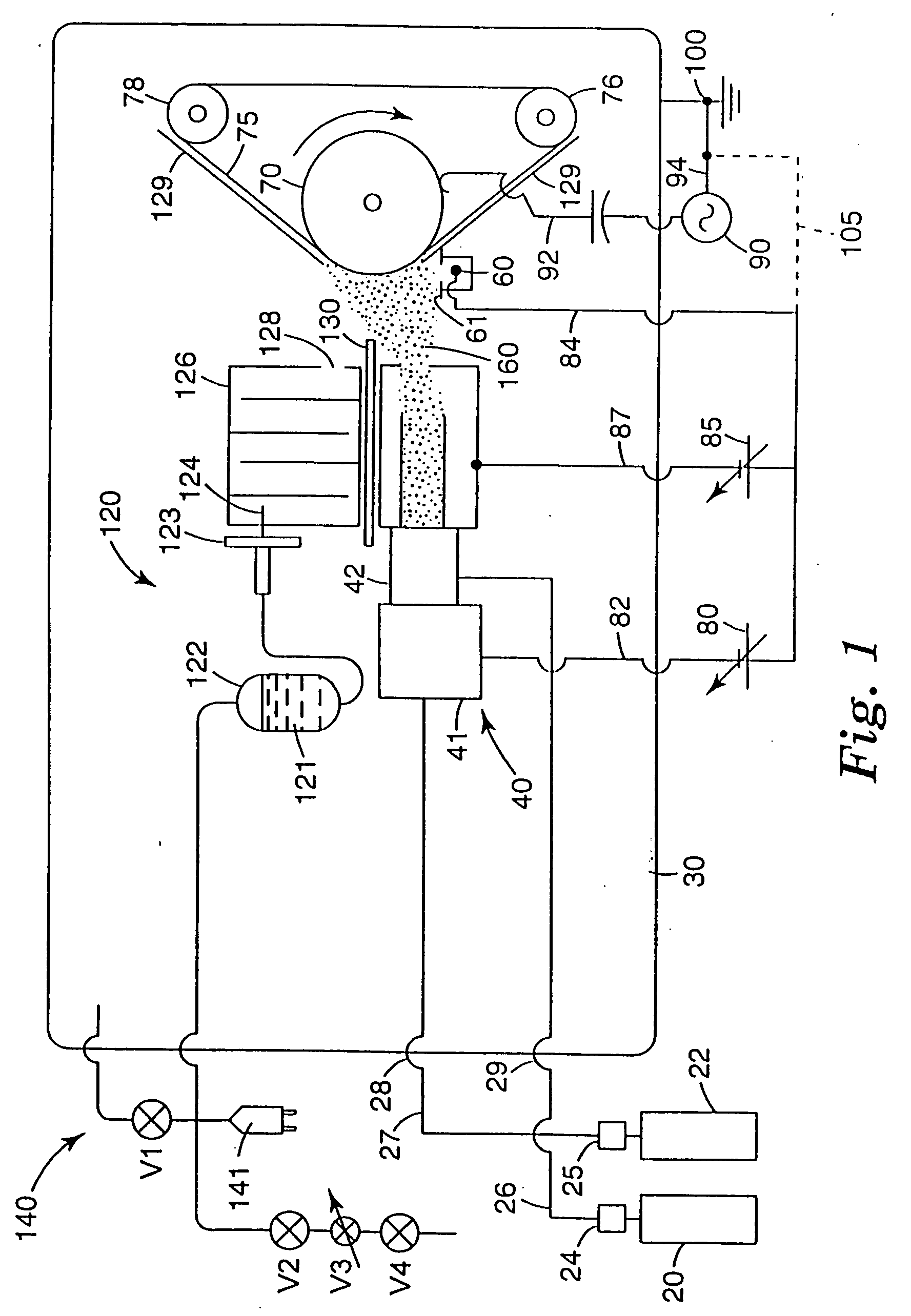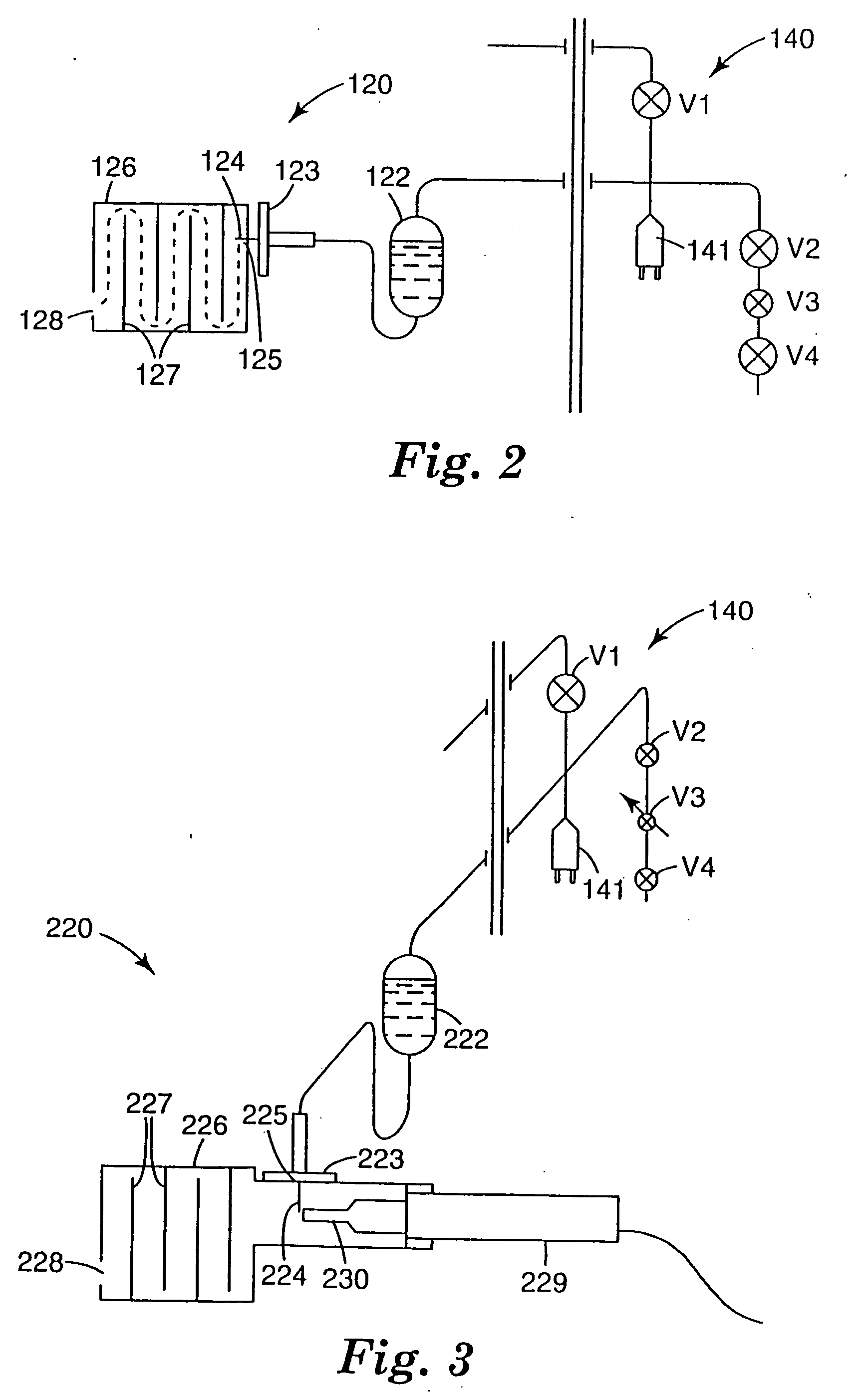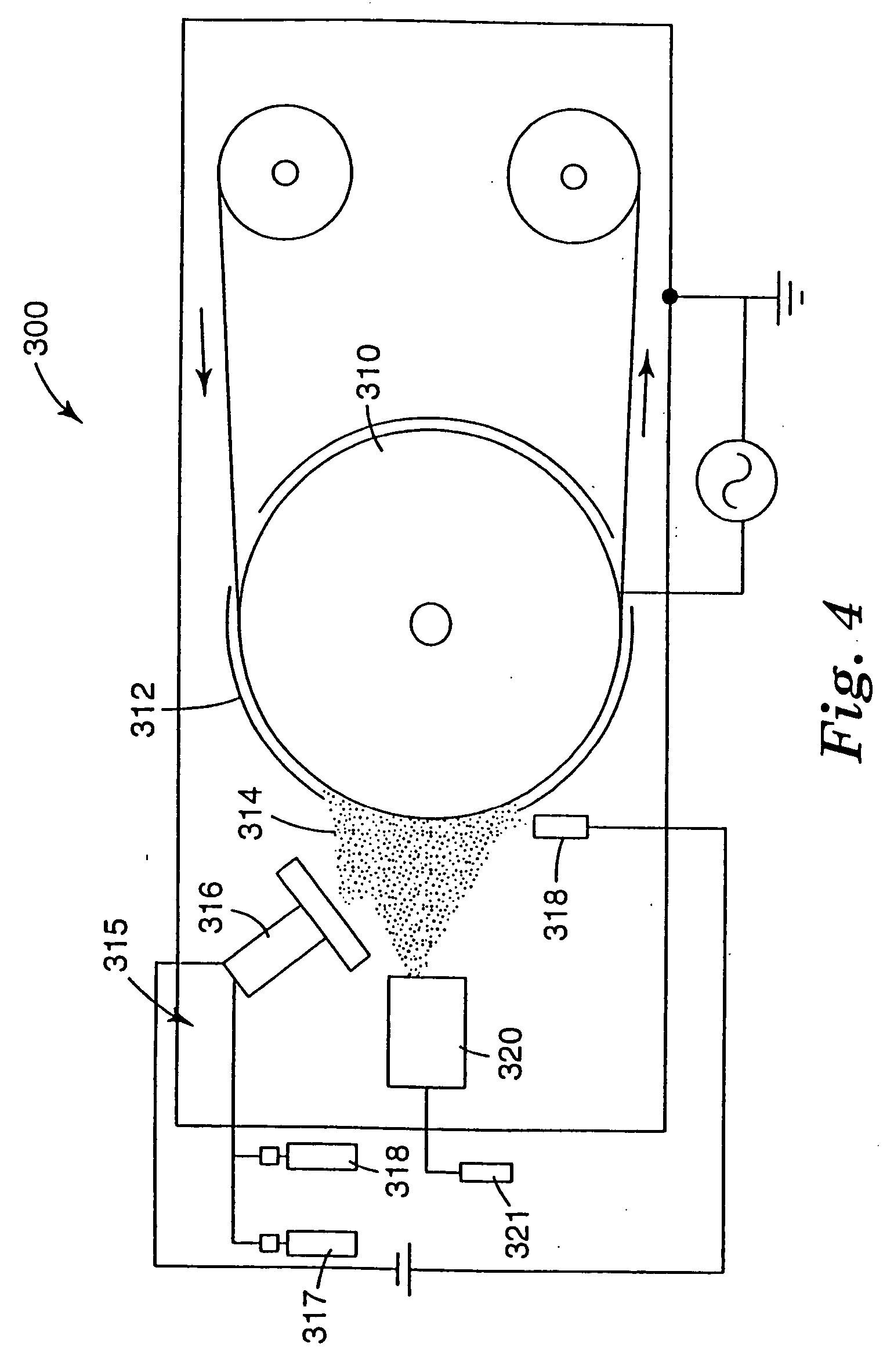Flash evaporation-plasma coating deposition method
a technology of plasma and evaporation, applied in the field of coatings, can solve the problems of lack of carbon powder formation, and inability to achieve the effect of evaporation,
- Summary
- Abstract
- Description
- Claims
- Application Information
AI Technical Summary
Benefits of technology
Problems solved by technology
Method used
Image
Examples
example 1
Silicone coatings were deposited on 30 cm wide and 0.074 mm thick untreated polyethylene terephthalate (PET) in the system shown in FIG. 4. The system is similar to the deposition chamber described in U.S. Pat. No. 5,464,667 (Kohler et al.) with several modifications, including a point source cathode and an oil delivery system.
The system included a biased chill roll, 48.2 cm in diameter and 33.5 cm wide. Except for the deposition area, about 76% of the surface of the radio frequency bias electrode was covered by an aluminum sheet. The aluminum sheet was grounded and placed about 0.6 cm away from the surface to provide a dark space and thus concentrated the bias wattage over the remaining 24% of the surface area. An imaginary horizontal plane could be drawn from the center of the radio frequency bias electrode to the slot opening of the oil delivery system, dividing the noncovered surface area in half. The point source cathode was placed about 7.5 cm above the imaginary plane and ...
example 2
Carbon-rich coatings were deposited on 30 cm wide and 1.4×10−3 cm thick video grade polyethylene terephthalate (PET) film having therein less than about 1% SiO2 slip agent (OX-50 from Degussa of Germany), which had been corona treated and wrapped for storage and handling in a packaging film with moisture barrier characteristics (manufactured by 3M Company, St. Paul, Minn.). The experiment was similar to Example 3 of U.S. Pat. No. 5,464,667 (Kohler et al.), which is incorporated herein by reference, except that the hollow cathode slot was replaced by the hollow cathode point source (i.e., point source cathode) described above in Example 1. The development of the point source cathode simplified the cathode system and eliminated several components of the hollow cathode slot system, including the argon plasma compartment together with the argon plasma power supply and the acetylene compartment.
The point source cathode was placed about 17.5 cm away from the biased chill roll. After th...
example 3
Silicone coatings were deposited on 15 cm wide and 2.54×10−3 cm thick film available under the trade designation “KAPTON” film from DuPont de Nemours (Wilmington, Del.), Type 100H. Except for the addition of an oil delivery system (described above) all other components of the deposition system were identical to those described in Example I of U.S. Pat. No. 5,464,667 (Kohler et al.); however, the arrangement of the deposition system was modified. The hollow cathode slot system was 9 cm away from the chill roll. Drawing an imaginary horizontal plane from the center of the radio frequency bias electrode to the cathode, the cathode slot was about 1.6 cm below the plane. The anode wire was about 4 cm away from the cathode slot and about 6 cm below the imaginary plane. A Pyrex glass plate (20 cm wide, 5 cm long, 0.3 cm thick) was placed parallel to and about 0.6 cm below the imaginary plane reaching from the front of the cathode box toward the radio frequency bias electrode and leaving a...
PUM
| Property | Measurement | Unit |
|---|---|---|
| Fraction | aaaaa | aaaaa |
| Fraction | aaaaa | aaaaa |
| Pressure | aaaaa | aaaaa |
Abstract
Description
Claims
Application Information
 Login to View More
Login to View More - R&D
- Intellectual Property
- Life Sciences
- Materials
- Tech Scout
- Unparalleled Data Quality
- Higher Quality Content
- 60% Fewer Hallucinations
Browse by: Latest US Patents, China's latest patents, Technical Efficacy Thesaurus, Application Domain, Technology Topic, Popular Technical Reports.
© 2025 PatSnap. All rights reserved.Legal|Privacy policy|Modern Slavery Act Transparency Statement|Sitemap|About US| Contact US: help@patsnap.com



